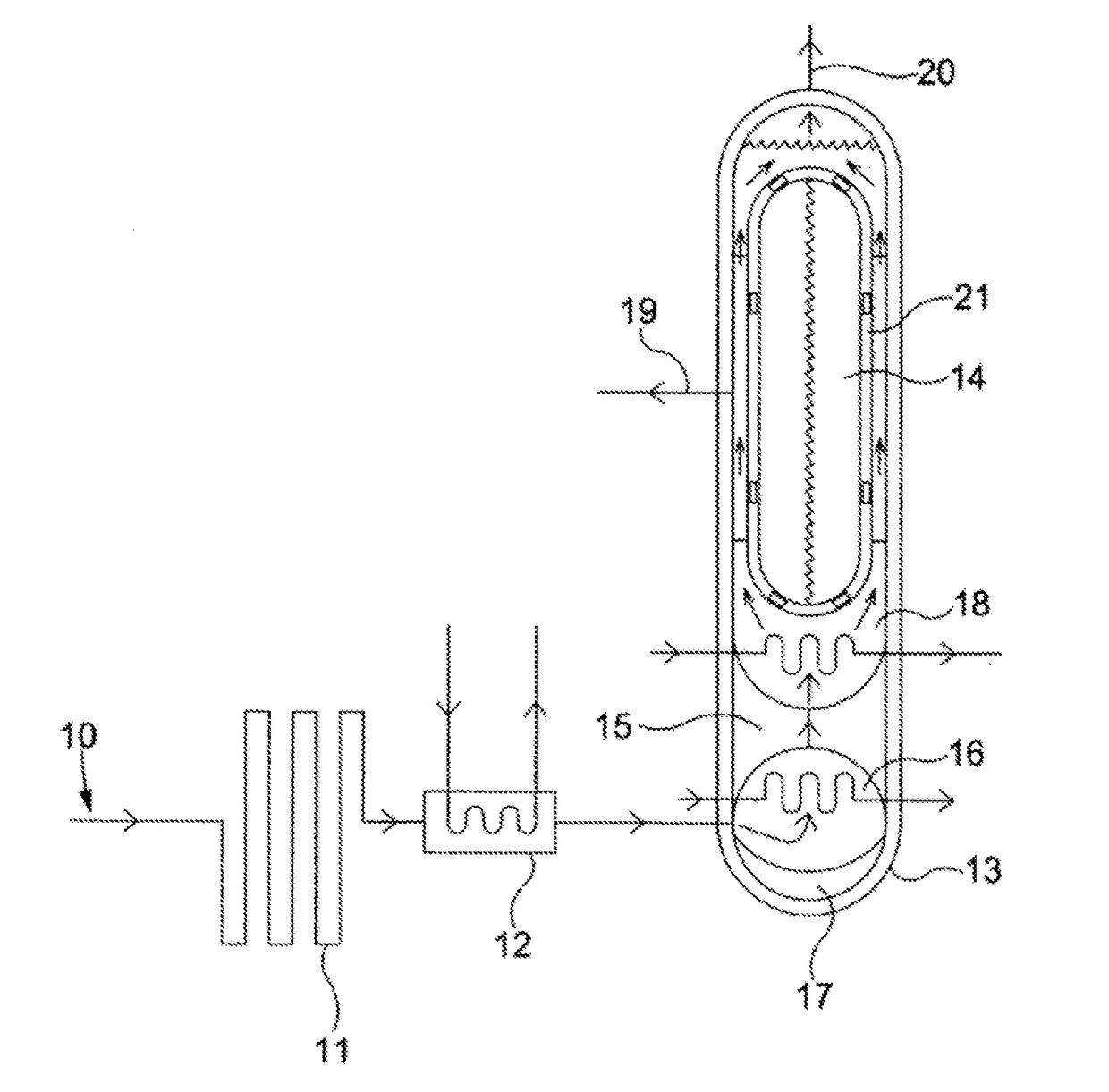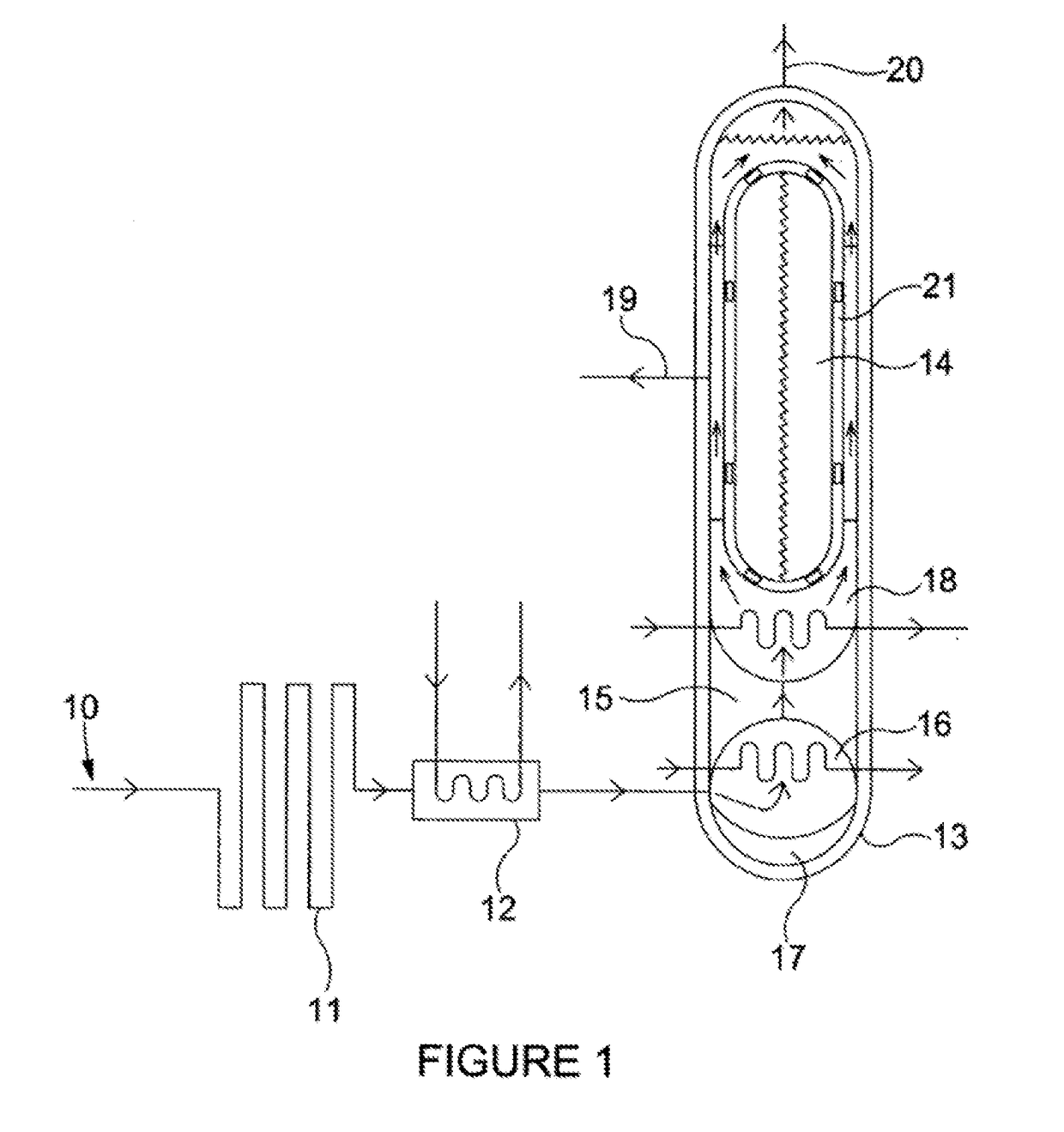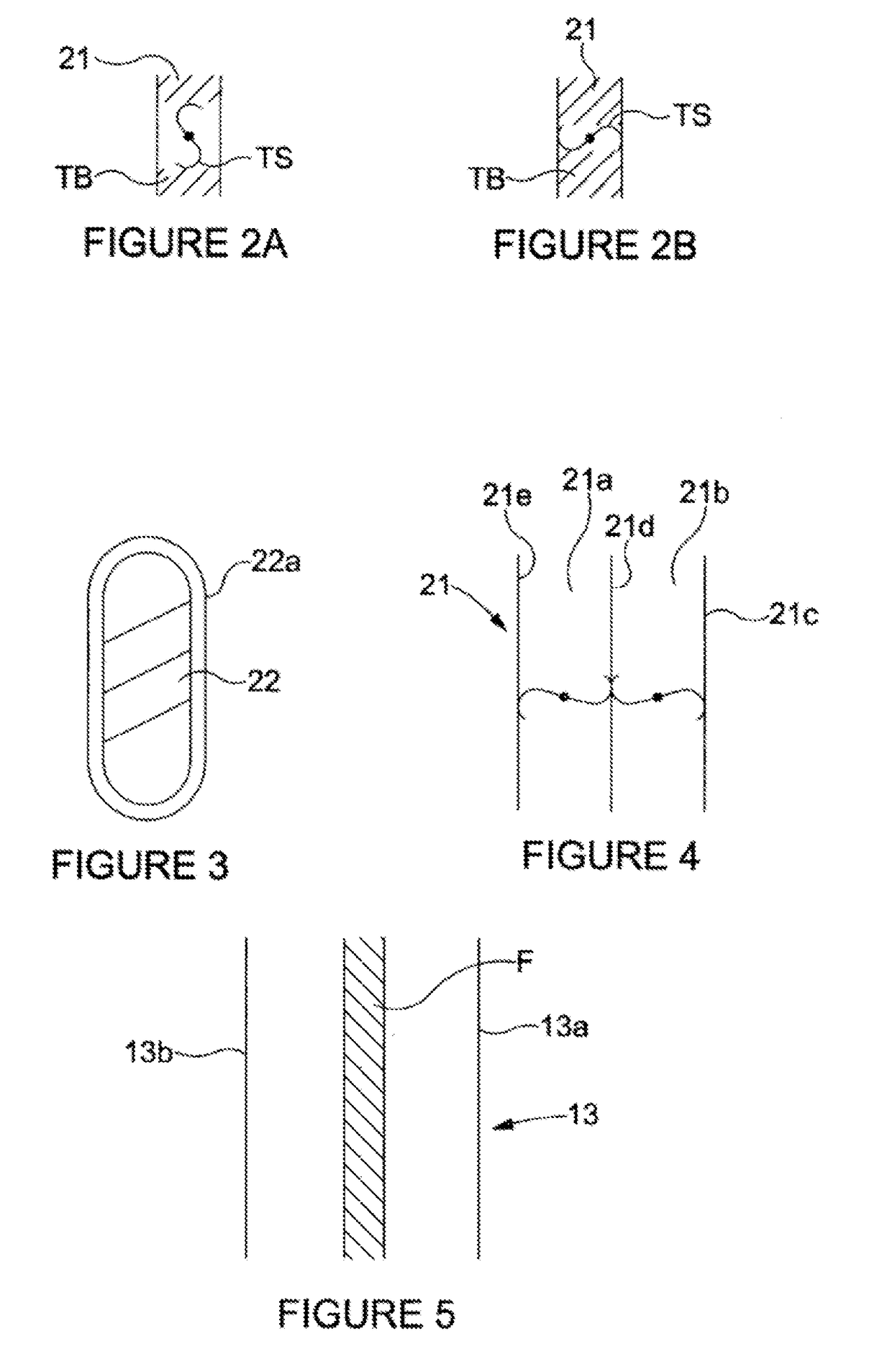Liquid Heating Appliance
a heating appliance and liquid technology, applied in the field of liquid heating appliances, can solve the problems of high running cost, relatively high cost of electric water heaters, and considerable thermal loss in operation, and achieve the effect of reducing heat loss and good insulation
- Summary
- Abstract
- Description
- Claims
- Application Information
AI Technical Summary
Benefits of technology
Problems solved by technology
Method used
Image
Examples
Embodiment Construction
[0041]Referring to FIG. 1, the illustrated embodiment of the appliance is a plumbed system that receives incoming pressurised cold water from a mains water supply. The mains water supply will commonly be at a pressure of between 1 and 4 bar and by virtue of that pressure is driven through the system without need of pumping. The water flows through the system from the inlet 10 (at the left end of the system as illustrated) to the outlet 20 (at the top right hand end as illustrated). The cold water entering the system at the water inlet 10 first passes through a non-return valve to enter an aerial heat exchanger 11 of high external surface area (suitably with plates or fins and similar to a radiator) and which serves to warm the water passing through it to around the ambient room temperature of the room in which the system is installed. The aerial heat exchanger 11 has below it a drip tray for any vapour in the room condensing on it, the drip tray having a surface area sufficient to c...
PUM
 Login to View More
Login to View More Abstract
Description
Claims
Application Information
 Login to View More
Login to View More - R&D
- Intellectual Property
- Life Sciences
- Materials
- Tech Scout
- Unparalleled Data Quality
- Higher Quality Content
- 60% Fewer Hallucinations
Browse by: Latest US Patents, China's latest patents, Technical Efficacy Thesaurus, Application Domain, Technology Topic, Popular Technical Reports.
© 2025 PatSnap. All rights reserved.Legal|Privacy policy|Modern Slavery Act Transparency Statement|Sitemap|About US| Contact US: help@patsnap.com



